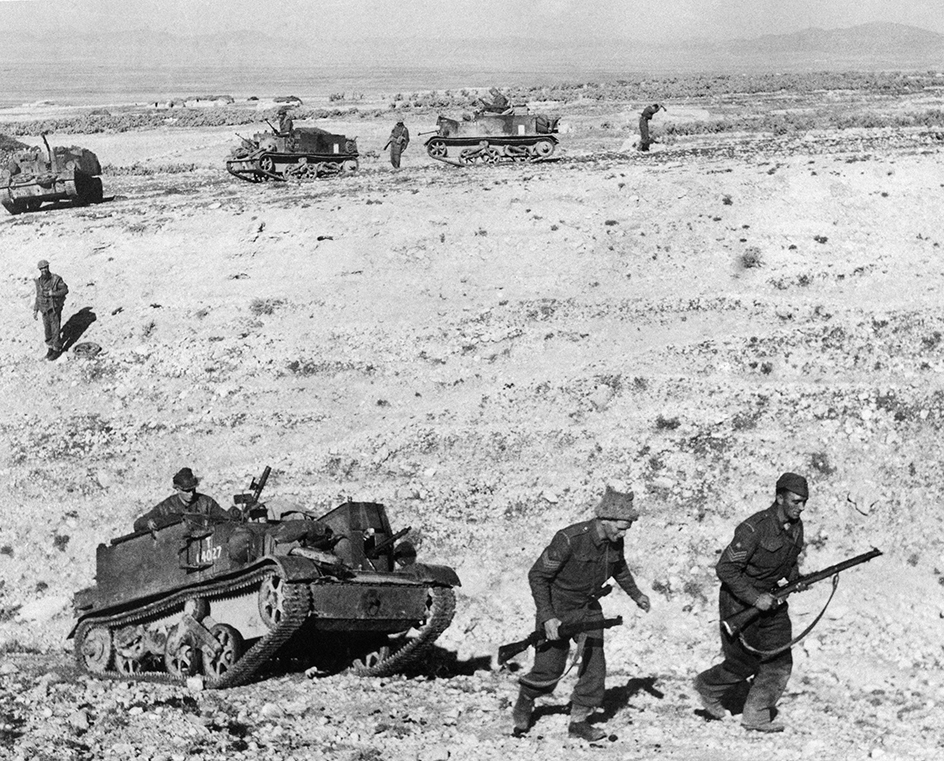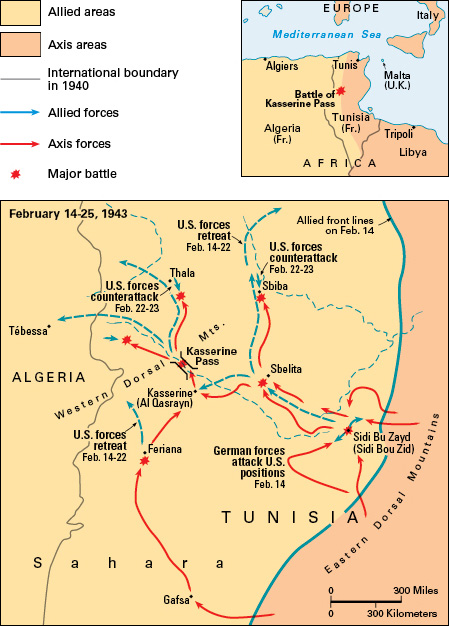Kasserine Pass, Battle of, was a clash mainly between German and United States forces during World War II (1939-1945). The battle took place in February 1943 and ended in a German victory. Kasserine Pass is a mountain route in central Tunisia, in northern Africa. The fight for Kasserine Pass was the first major clash between German and U.S. troops in World War II. British, French, and Italian troops also fought in the battle. Lessons learned at Kasserine Pass helped Allied forces improve in later battles against the Germans. The Battle of Kasserine Pass was part of the larger Tunisia Campaign, which ended months later in a decisive Allied victory.

Background.
From 1940 to 1942, British and Commonwealth troops fought Nazi German and Italian forces in northern Africa. Most of the battles took place in Egypt and Libya. On Nov. 8, 1942, U.S. troops with British support invaded Algeria and Morocco. At that time, France, which had earlier fallen to Germany, controlled Algeria and Morocco. After briefly resisting the invasion, defending French forces joined the Allies. The combined Allied force then pushed across Algeria into northern Tunisia. At the same time, British forces pushed from Libya into southern Tunisia. 
The Germans, aiming to stop the Allied advance, planned an assault on Kasserine Pass. They sought to keep the Allies from Tunis, Tunisia’s capital and most important port. The assault involved hundreds of tanks and some 22,000 German and Italian troops. The scattered Allied force in the area numbered about 30,000.
The battle.
On Feb. 14, 1943, German forces attacked U.S. and French forces around the central Tunisian town of Sidi Bu Zayd (also spelled Sidi Bou Zid or Sidi Bouzid). The Germans overran a number of Allied positions, causing heavy casualties (people killed and wounded). Overmatched and unprepared, Allied troops fell back in confusion. German troops captured numerous Allied prisoners. They also took Allied equipment and supplies, including badly needed fuel. By the end of February 20, the Germans had captured several Allied positions, including the key mountain pass at Kasserine.
Allied troops rallied to stop the German advance before the western passes into Algeria. The Germans, lacking supplies and reinforcements, also faced the threat of a British attack from the south. German troops withdrew from Kasserine Pass on February 23. Allied forces regained the position on February 25.
Aftermath.
American forces suffered the heaviest losses in the fighting around Kasserine Pass. About 300 U.S. troops died. Another 6,000 were wounded or captured. British and French forces also suffered a number of casualties. More than 1,500 Germans and Italians were killed, wounded, or captured. After the defeat at Kasserine Pass, the Allies worked to improve the coordination of their ground and air forces. They also replaced a number of combat commanders. Among the newly promoted U.S. Army officers were major generals Omar Bradley and George S. Patton. Both Bradley and Patton played key roles in later Allied victories over Germany.
Allied troops quickly regained the advantage in Tunisia. The last Axis forces in North Africa surrendered in May 1943.
See also Bradley, Omar Nelson ; Patton, George Smith, Jr. ; World War II (The Tunisia Campaign) .
